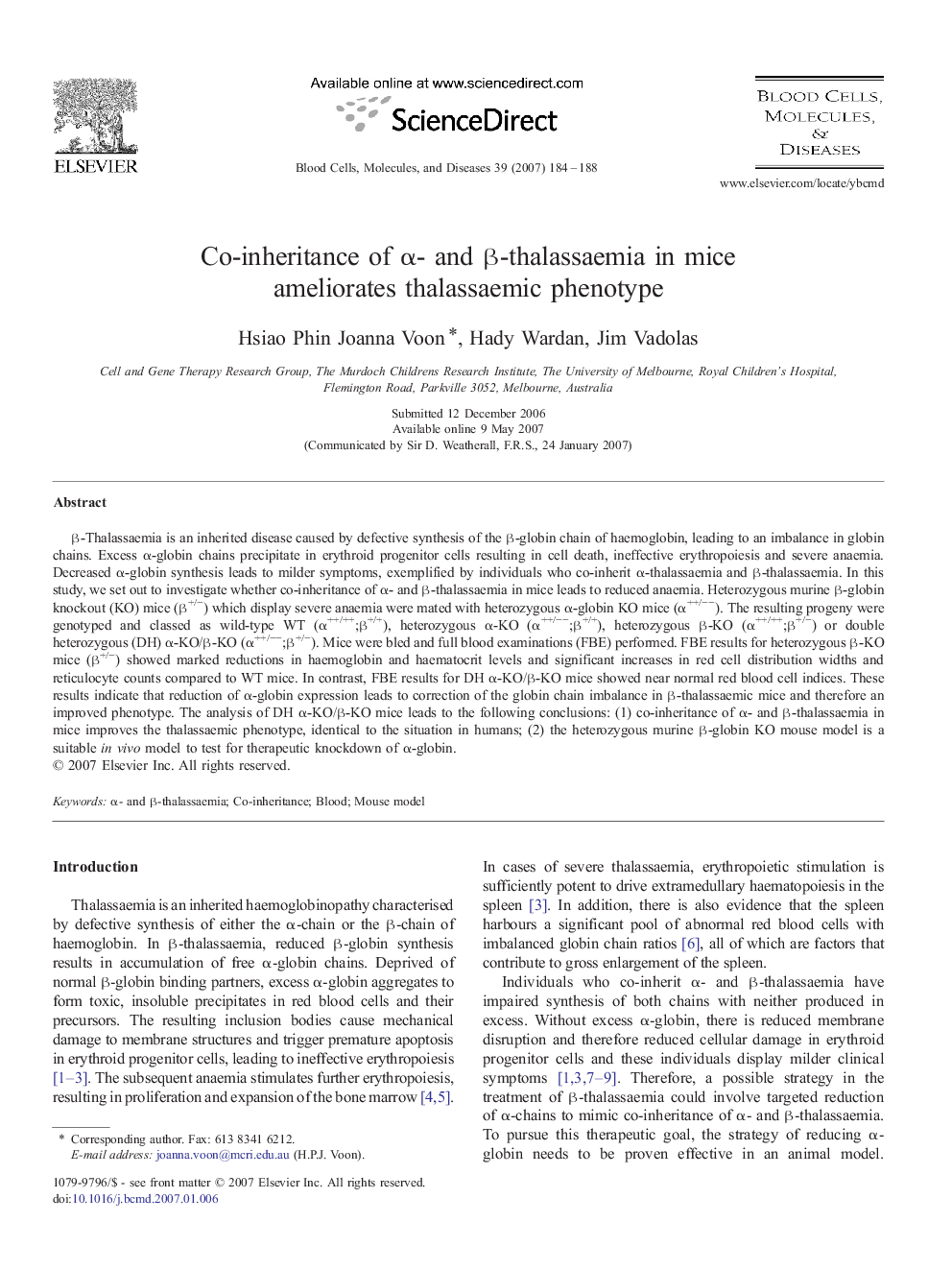| Article ID | Journal | Published Year | Pages | File Type |
|---|---|---|---|---|
| 2828113 | Blood Cells, Molecules, and Diseases | 2007 | 5 Pages |
β-Thalassaemia is an inherited disease caused by defective synthesis of the β-globin chain of haemoglobin, leading to an imbalance in globin chains. Excess α-globin chains precipitate in erythroid progenitor cells resulting in cell death, ineffective erythropoiesis and severe anaemia. Decreased α-globin synthesis leads to milder symptoms, exemplified by individuals who co-inherit α-thalassaemia and β-thalassaemia. In this study, we set out to investigate whether co-inheritance of α- and β-thalassaemia in mice leads to reduced anaemia. Heterozygous murine β-globin knockout (KO) mice (β+/−) which display severe anaemia were mated with heterozygous α-globin KO mice (α++/−−). The resulting progeny were genotyped and classed as wild-type WT (α++/++;β+/+), heterozygous α-KO (α++/−−;β+/+), heterozygous β-KO (α++/++;β+/−) or double heterozygous (DH) α-KO/β-KO (α++/−−;β+/−). Mice were bled and full blood examinations (FBE) performed. FBE results for heterozygous β-KO mice (β+/−) showed marked reductions in haemoglobin and haematocrit levels and significant increases in red cell distribution widths and reticulocyte counts compared to WT mice. In contrast, FBE results for DH α-KO/β-KO mice showed near normal red blood cell indices. These results indicate that reduction of α-globin expression leads to correction of the globin chain imbalance in β-thalassaemic mice and therefore an improved phenotype. The analysis of DH α-KO/β-KO mice leads to the following conclusions: (1) co-inheritance of α- and β-thalassaemia in mice improves the thalassaemic phenotype, identical to the situation in humans; (2) the heterozygous murine β-globin KO mouse model is a suitable in vivo model to test for therapeutic knockdown of α-globin.
